Chapter contributors
Chapter contributors and contact details

Sparring male cactus flies, Chaetonerius alluaudi (Giglio-Tos) (Neriidae) from Mauritius (© S.A. Marshall)
The Diptera ('true flies' or 'two-winged flies') constitute one of the largest orders of insects, with more than 160,000 species known worldwide and at least as many more still awaiting discovery.
They are as diverse morphologically and biologically as they are numerous, and many groups have evolved spectacular structural adaptations commensurate with their environment and biology.
During their long evolutionary history, virtually every terrestrial niche has been occupied by flies, making them one of the most successful and abundant groups of organisms.
Flies occur on all continents, including Antarctica, and many have co-evolved in association with other organisms to become highly specialised parasites or parasitoids of a wide range of plants and animals.
Flies play a significant role in human health and agriculture:

The horsefly Tabanus gratus (Loew) (Tabanidae) from Namibia (© S.A. Marshall)
The Manual of Afrotropical Diptera provides an up-to-date, well-illustrated, interpretable means for identifying families and genera of two-winged flies of the continental Afrotropical Region, its associated oceanic islands and the southernmost Arabian Peninsula. The manual is also designed to be a basic reference work to a wide spectrum of biosystematic information on Diptera for professional biologists, teachers, university students and informed amateurs.
The main aim of the manual is to foster a better understanding of the science of dipterology, especially in Africa, and encourage the study of Diptera by new generations of dipterists.
Of the 108 families known in the Afrotropics, four families are endemic to the region (in the extant fauna): Glossinidae, Marginidae, Mormotomyiidae and Natalimyzidae, although Glossinidae and Natalimyzidae are known in the fossil record from North America and Europe, respectively. Mormotomyiidae and Natalimyzidae are currently monotypic, but numerous undescribed species of Natalimyzidae are known from the Afrotropics. The occurrence of the family Trichoceridae in the Afrotropics is questionable, but the family is included in both the Key to Diptera families - adults (Chapter 12) and Key to Diptera families - larvae (Chapter 13).
Chapter contributors and contact details
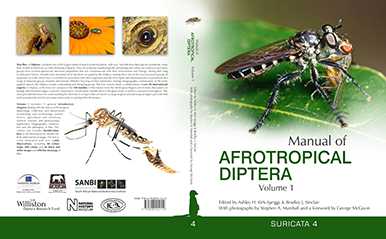



Available in 2025
Ashley H. Kirk-Spriggs
Email: ashley.kirk-spriggs@anhrt.org.uk
Bradley J. Sinclair
Canadian National Collection of Insects and Canadian Food Inspection Agency
OPL-Entomology
K.W. Neatby Bldg.
960 Carling Avenue
Ottawa
Ontario K1A OC6
Canada
Email: bradley.sinclair@canada.ca
David A. Barraclough (Barracloughd@ukzn.ac.za)
Maureen Coetzee (maureenc@nicd.ac.za)
Jeffrey M. Cumming (jeff.cumming@canada.ca)
Marc De Meyer (marc.de.meyer@africamuseum.be)
Torsten Dikow (DikowT@si.edu)
Netta Dorchin (ndorchin@tauex.tau.ac.il)
Torbjørn Ekrem (torbjorn.ekrem@ntnu.no)
Martin Hauser (mhauser@cdfa.ca.gov)
Stephen A. Marshall (samarsha@uoguelph.ca)
Thomas Pape (tpape@snm.ku.dk)
Jeffrey H. Skevington (jhskevington@gmail.com)
Norman E. Woodley (normwoodley@gmail.com)

Figure 1: Map indicating extent of Afrotropical Region as applied in this Manual, with states (countries), islands and island groups numbered (1–73) (G.K. McGregor; based on Crosskey 1980: 32, with additions and amendments).
The region as defined here, extends the concept of the Afrotropical Region farther eastwards, to include the modern coastal Arabian states of Yemen, Oman and United Arab Emirates (Nos 11–14 on Figure 1).
The geographical concept adopted here for the region also follows Crosskey (1980), in including the South Atlantic islands of Ascension (56), Saint Helena (57), Tristan da Cunha (58) and Gough (59) in the Manual coverage, in addition to the Cape Verde Islands (15) (referred to by the modern state name Cabo Verde), the Gulf of Guinea islands of Bioko (52), São Tomé and Príncipe (53/54) and Annobón (55) and the islands of the western Indian Ocean (islands and island groups numbered 60–73 on Fig. 1) that are conventionally ascribed to the Afrotropical Region in its wider sense. The islands of Zanzibar (39) and Pemba (40), situated off the coast of Tanzania were not listed by Crosskey (1980: 29–31), but are indicated on Fig. 1. The sub-Antarctic islands of the southern Indian Ocean (including Marion Island) are excluded.
A full list of states, islands and island groups included in the region refer to Table 1 in Chapter 1 “Introduction and brief history of Afrotropical dipterology” (Kirk-Spriggs 2017: 4–5).
Crosskey, R.W. (ed.).1980. Catalogue of the Diptera of the Afrotropical Region. London: British Museum (Natural History).
Kirk-Spriggs, A.H. 2017. 1. Introduction and brief history of Afrotropical dipterology. In: Kirk-Spriggs, A.H. & Sinclair, B.J., eds, Manual of Afrotropical Diptera. Volume 1. Introductory chapters and keys to Diptera families. Suricata 4. Pretoria: South African National Biodiversity Institute, pp. 1–67.
Purchasing/ordering of hard copies of all volumes of the Manual of Afrotropical Diptera from overseas (outside of South Africa) must be made online through the Pro Visions books website, rURL.co.za/SANBI.
Within South Africa, hard copies can be ordered directly from the publishers, SANBI, South Africa.
In the United Kingdom copies are available from Pemberley Natural History Books.
Authors of chapters in all four volumes can purchase hard copies directly from SANBI (sanbibookshop@sanbi.org.za) at a discount of 25%. A list of chapter authors entitled to discounts has been supplied to SANBI and only those listed are entitled to receive a discount.
Book suppliers receive a 25% discount and should contact the SANBI Bookshop directly (sanbibookshop@sanbi.org.za) to arrange orders, payments and deliveries.
Chapter authors and others wishing to reproduce images published in the Manual of Afrotropicial Diptera are kindly referred to the Terms and Conditions of usage PDF, which includes a Licence Agreement (Annexure E on page 19), with related Annexure B (page 10). An author wishing to re-use a published image(s) should familiarise himself/herself with Annexure B, complete Annexure E and submit this to Sandra Turck at SANBI (S.Turck@sanbi.org.za).
The following sponsors are acknowledged for supporting the publication of the Manual of Afrotropical Diptera
The international Diptera collection is one of the world’s leading research collections, with more than three million specimens, including important type material of Diptera. Some of these specimens date back to the 18th century, most notably of taxa described by E.E. Austen, J.M.F. Bigot, E.A. Brunetti, F.W. Edwards and F. Walker. The collection holds extensive material from the Afrotropical Region, much of which was generated during Africa’s colonial period. The manual project was in receipt of two grants from the Dr E.C. Zimmerman Bursary (administered through the Museum), specifically to cover the cost of illustrations to be prepared for the manual. Andrew Polaszek and M. Wilkinson are thanked for securing funding in support of the project.
SANBI is responsible for exploring, revealing, celebrating and championing biodiversity for the benefit and enjoyment of all of South Africa’s people. As well as being the custodian of the National Botanical Gardens’ system, SANBI is a respected authority in research and has an unmatched research record in the indigenous, naturalised and alien flora of South and southern Africa and beyond. SANBI’s research management covers systematics and collections expansion, conservation and applied biodiversity science and climate change. The Institute’s knowledge management and planning branch strives to make biodiversity science more available and accessible through various projects and initiatives. Michelle Hamer is thanked for supporting the project.
The Trust is dedicated to the study of the Afrotropical fauna. The research institute is primarily focused on entomological biodiversity and taxonomy with an emphasis on the Lepidoptera. Specimens of all insect orders collected during the multiple perennial expeditions to poorly-sampled regions throughout Africa are prepared and curated in a purpose built, state-of-the-art museum and laboratory facility in Leominster in the west of England. The Trust welcomes and encourages specialist researchers to study the ever-increasing collection holdings of modern material. The Chairman of Trustees, Richard Smith, is thanked for supporting the project and providing funding to cover production costs.
The Diamond Route is a massive South African national project that focuses on linking the conservation properties of the Oppenheimer family and De Beers. These properties conserve vast areas and provide a safe haven for a wide variety of unique, rare and ecologically important plants and animals. E. Oppenheimer & Son sponsored a wine reception and banner for the official launch of the project in 2010 and also provided funding for illustrations to be prepared for the Manual. Duncan MacFadyen is thanked for securing funding in support of the project.
A Smithsonian administered endowment fund, established for the increase and diffusion of knowledge about Diptera. Williston was a great biologist, who made significant contributions to palaeontology, entomology, medicine and education. He was the first native dipterist, the first to produce generic monographs of Nearctic Diptera, the first to curate and study the Diptera of the U.S. National Museum and the first to make a contribution to that collection. This man and his achievements epitomise what this fund was established to support. The Samuel Wendell Williston Diptera Research Fund is a major sponsor for the project and has provided funding to cover production costs. F. Christian Thompson and T. Dikow are thanked for securing funding in support of the project.
A leading centre for dipterological research in the Afrotropical Region. The Museum has a proud history of over 50 years of research on Diptera and has accrued a collection of Diptera from over 98 countries, comprising approximately 205,000 specimens, representing over 7,000 species. It further holds an extensive type collection of over 2,000 species of Diptera. It houses the collections of B.R. Stuckenberg and J.G.H. Londt (both previous Directors of the institution), as well as part of the Diptera collection of the former South African Institute for Medical Research (including the collection of F. Zumpt and associated types). Currently it also houses one of the most comprehensive collections of Asilidae in the world. It offers bona fide researchers access to the extensive collection of Diptera and bench space at no cost. The Director and the Council of the KwaZulu-Natal Museum are thanked for supporting the project.
A not-for-profit organisation, promoting and supporting research and education in systematics, natural resources and environmental sciences, and within those, particularly projects that involve flies (order Diptera) and spiders (order Araneae). The Schlinger Foundation does not accept unsolicited applications for project support. The Schlinger Foundation is a major sponsor for the project and has provided funding to cover production costs. Michael E. Irwin is thanked for securing funding in support of the project.
African Invertebrates (PDF 392KB)
American Entomologist (PDF 174 KB)
Antenna (Newsletter of the Royal Entomological Society) (PDF 1,520 KB)
Bulletin of the Entomological Society of Canada (PDF 913KB)
International Journal of Tropical Insect Science
Transactions of the Royal Society of South Africa (PDF 394KB)


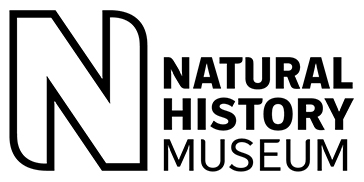
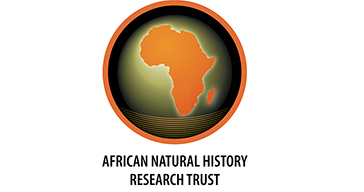
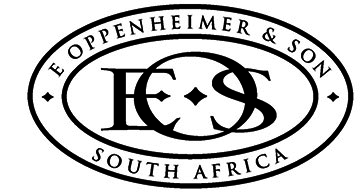
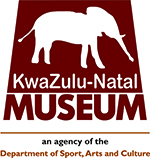
©2009–2020 Manual of Afrotropical Diptera, editors, authors
©2009–2020 Stephen A. Marshall (photographs on this page)